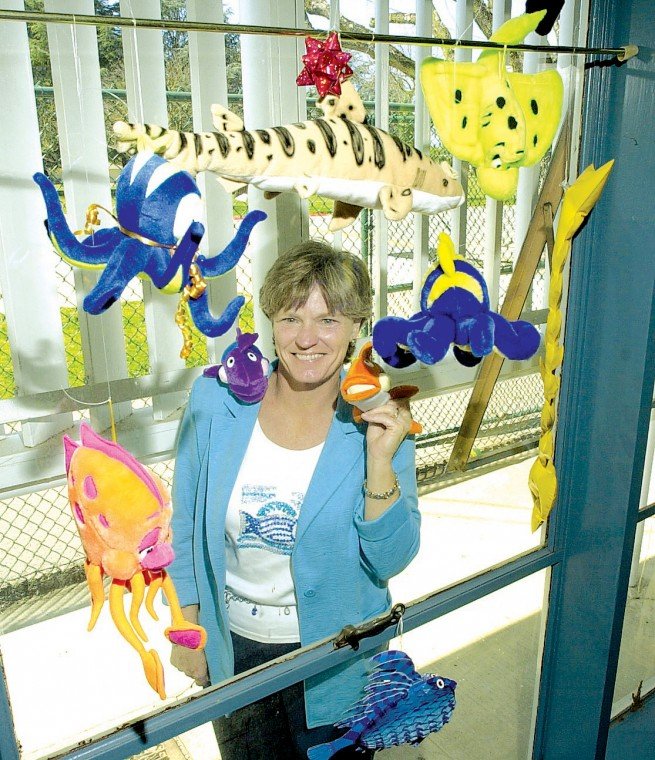GILROY
– Educating, supervising and evaluating between 20 and 40
children a day all day is no easy task any time of year. But throw
into the mix next year’s layoffs, government’s emphasis on school
improvement and still unfinished contract negotiations locally,
it’s not a stretch to say that teachers in
Gilroy Unified School District have it as tough, or tougher,
than ever.
GILROY – Educating, supervising and evaluating between 20 and 40 children a day all day is no easy task any time of year. But throw into the mix next year’s layoffs, government’s emphasis on school improvement and still unfinished contract negotiations locally, it’s not a stretch to say that teachers in Gilroy Unified School District have it as tough, or tougher, than ever.
GUSD has to spend $3 million less over this school year and next, yet find a way to improve instruction and learning. It has already cut 45 teaching and administrative positions and at least three of the affected employees are appealing.
Depending on who you ask in the GUSD, the morale of everyday classroom teachers runs full gamut. Some say the challenges are making teachers pull together more than in the past; others say job uncertainty and increased expectations make them feel unsettled and sad.
Still others in the teaching ranks compare themselves to the proverbial hamster spinning its running wheel.
“Morale isn’t so much the issue I focus on as is peddling fast enough to stay on my bicycle,” said Terry Graham, a fifth-grade teacher at Antonio Del Buono Elementary School and lead negotiator for teachers in their contract talks with the district. “Implementing all of the district’s well-intentioned initiatives without having sufficient time to fully internalize and integrate the information makes me wonder if I’m practicing for the (Tour de France) with a tricycle.”
Before the $35 billion budget crisis emerged in California, GUSD entered a period of districtwide reform. Changes in class curriculum and increased expectations to do extra training hit teachers hard. From making sure everything they taught aligned with the state’s academic standards to committing more time to professional development, many GUSD teachers had their professional life virtually revamped.
“There are differences from site to site, but the fact remains that there is a high level of stress right now,” said Michelle Nelson, president of the Gilroy Teachers Association. “Last year, the stress was concentrated at the high school (over the controversy related to implementing an honors program). This year, it is concentrated in the elementary schools, where teachers are being asked to implement too many new programs and strategies at the same time.”
The new programs and strategies are being put into practice to ensure that students continue to improve on year-end standardized tests and are able to pass the California High School Exit Exam. Starting in 2004 all high schoolers must pass the exit exam in order to graduate.
Improving the scores of all students takes on added importance given new accountability guidelines that allow the state to replace management and change curriculum when schools do not improve.
During the week of April 7, state-approved education consultants will visit Brownell Middle School. While it is unlikely management there will be replaced, the junior high staff and its programs will be observed, evaluated and to some degree changed.
“Certainly there are days where it weighs heavily. (But) in some ways, I think morale here is better this year,” Brownell Principal Suzanne Damm said. “We’ve already made program changes, we know we’re doing good and we think we’re going to prove that.”
Recently, Damm threw a party for the school, celebrating improvements by 800 out of 900 students on local standardized tests.
“There’s a culture on this campus to do well,” Damm said. “We have students who get upset if they don’t go up on (certain standardized tests).”
Nonetheless, Damm is using some alternative techniques to keep teacher morale on an even keel in this potentially tumultuous year.
Damm brought in a series of motivational videos for teachers to watch this semester. In the program, motivational techniques used to motivate workers inside a fish factory are discussed. Signs that the tapes touched Damm’s staff can now be seen all over her office.
“People just started bringing in stuffed animals and other things. My office is packed with fish now,” Damm said.
In April and May, Superintendent Edwin Diaz will make rounds at each school site to meet with faculty and address concerns, something he said he does every year. Nelson, of the Gilroy Teachers Association, worries he won’t get an accurate picture of teacher morale during those visits.
“I think it’s a sad state of affairs in this district when I ask people if they would be willing to comment about the morale among the teachers and they say they are afraid to say anything,” Nelson said. “The atmosphere right now is one of anxiety and fear.”
Diaz acknowledged some employees’ natural inclinations to not speak up, but believes he has his finger on the pulse of the district nonetheless.
“I just try to be as open and honest as I can,” Diaz said. “I know a lot of people in this district personally, and I talk to those people I know and get a lot of feedback.
“Overall, I think morale here is pretty good considering everything that’s going on,” Diaz said. “But there’s no way around it, you can’t make significant change without people being a little bit uncomfortable.”













